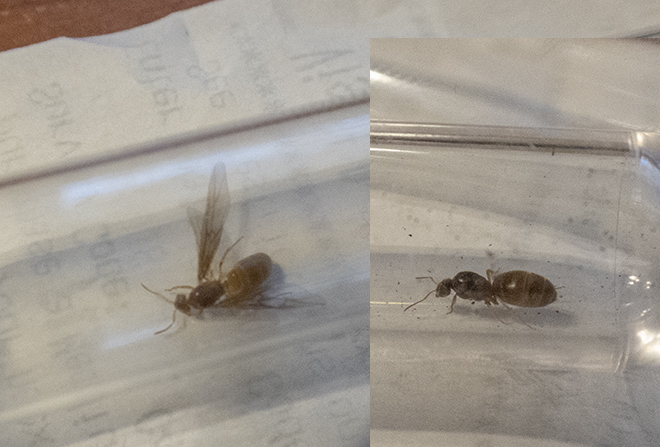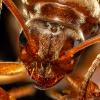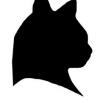I was thinking Lasius of some kind?
1. Location (on a map) of collection: Boston, MA
2. Date of collection: 09/16/18
3. Habitat of collection: side walk
4. Length (from head to gaster): 7-8mm
5. Color, hue, pattern and texture: black reddish
6. Distinguishing characteristics:
7. Distinguishing behavior:
8. Nest description: N/A

The one on the left seems different than the other three I caught. gaster seems longer and thinner and a lighter color. It also seems to be not doing well. maybe dying? Male alate possibly?

















